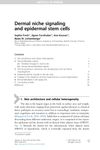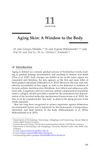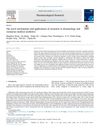Decision Letter: Role of Distinct Fibroblast Lineages and Immune Cells in Dermal Repair Following UV Radiation-Induced Tissue Damage
June 2021
fibroblasts UV radiation tissue remodeling papillary fibroblasts dermis CD4 T cells CD8 T cells gene expression profiles neonatal skin adult mouse skin sun-exposed human skin microdissected human skin UVB exposure basement membrane dermal fibroblasts inflammation apoptosis PGE-2 skin cells UV light skin repair upper skin layer cells skin layer helper T cells cytotoxic T cells gene activity patterns baby skin sun-exposed skin dissected skin UV light exposure skin base layer cell death prostaglandin E2
TLDR Different types of sun exposure can damage skin cells and affect healing, with chronic exposure being more harmful, and certain immune cells help in the repair process.
The study by Rognoni et al. found that different fibroblast populations in the skin respond differently to UV radiation and tissue remodeling. Papillary fibroblasts in the upper dermis are primarily responsible for tissue repair after acute UV radiation, but chronic UV damage is harder to repair due to a severe loss of these fibroblasts, a phenomenon also seen in aging skin. CD4 and CD8 T cells support UV-induced tissue repair by maintaining papillary fibroblasts. The study used gene expression profiles of different fibroblast subpopulations in undamaged neonatal and adult mouse skin, sun-exposed human eyelid skin, and microdissected human skin. After acute UVB exposure, all fibroblasts near the basement membrane in the upper dermis are depleted, but recover to baseline levels 14 days after exposure. Chronic UVB exposure, however, results in persistent depletion of upper fibroblasts. The study also found a significant loss of dermal fibroblasts in human skin 1 day post UV radiation, followed by a transient increase during the repair phase and a return to pre-exposure levels after two weeks. Both CD4+ and CD8+ T cells influence dermal fibroblast survival and proliferation, suggesting that UVB-induced inflammation affects dermal fibroblast survival, with increased fibroblast apoptosis and PGE-2 levels upon T cell depletion.


